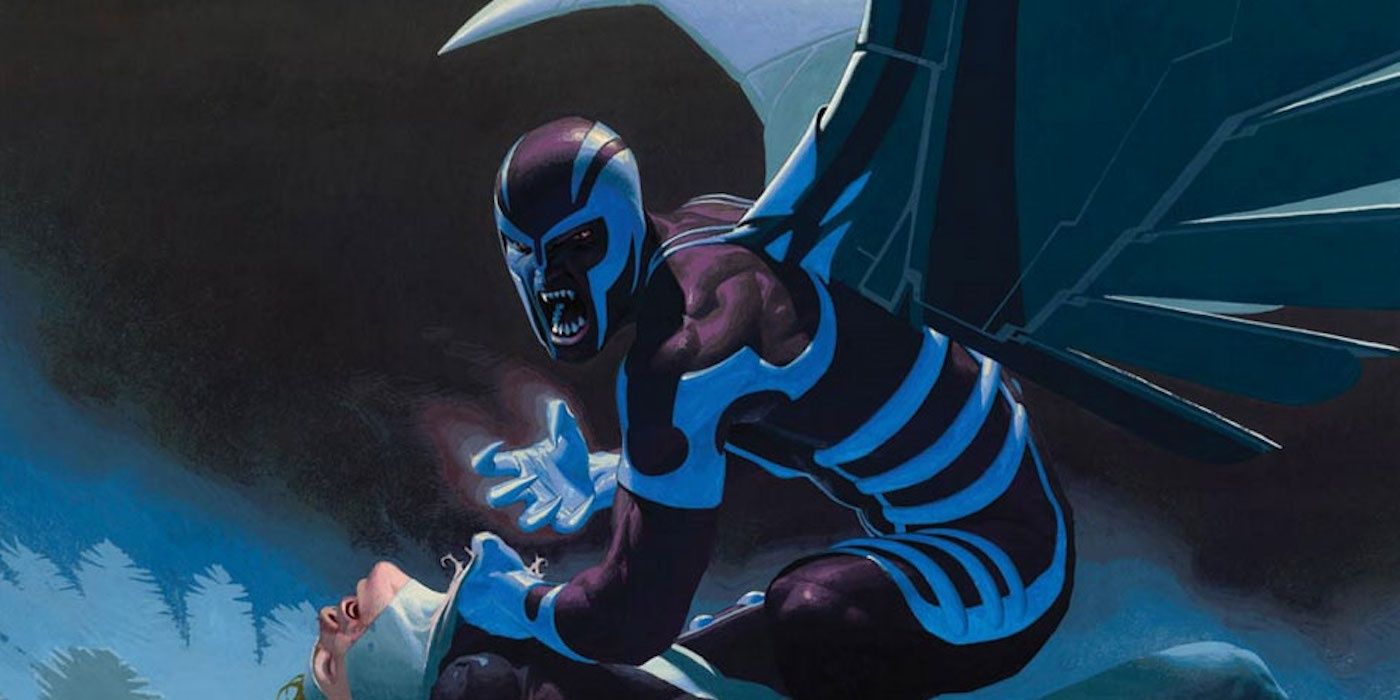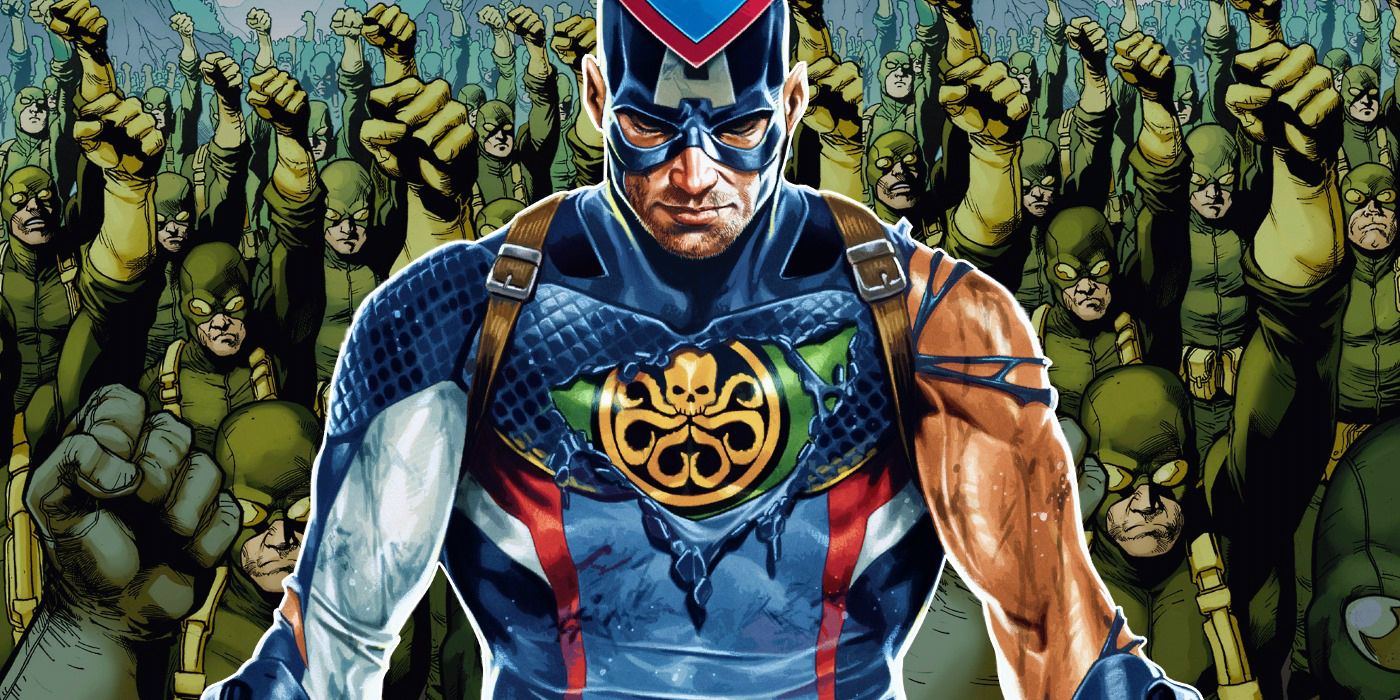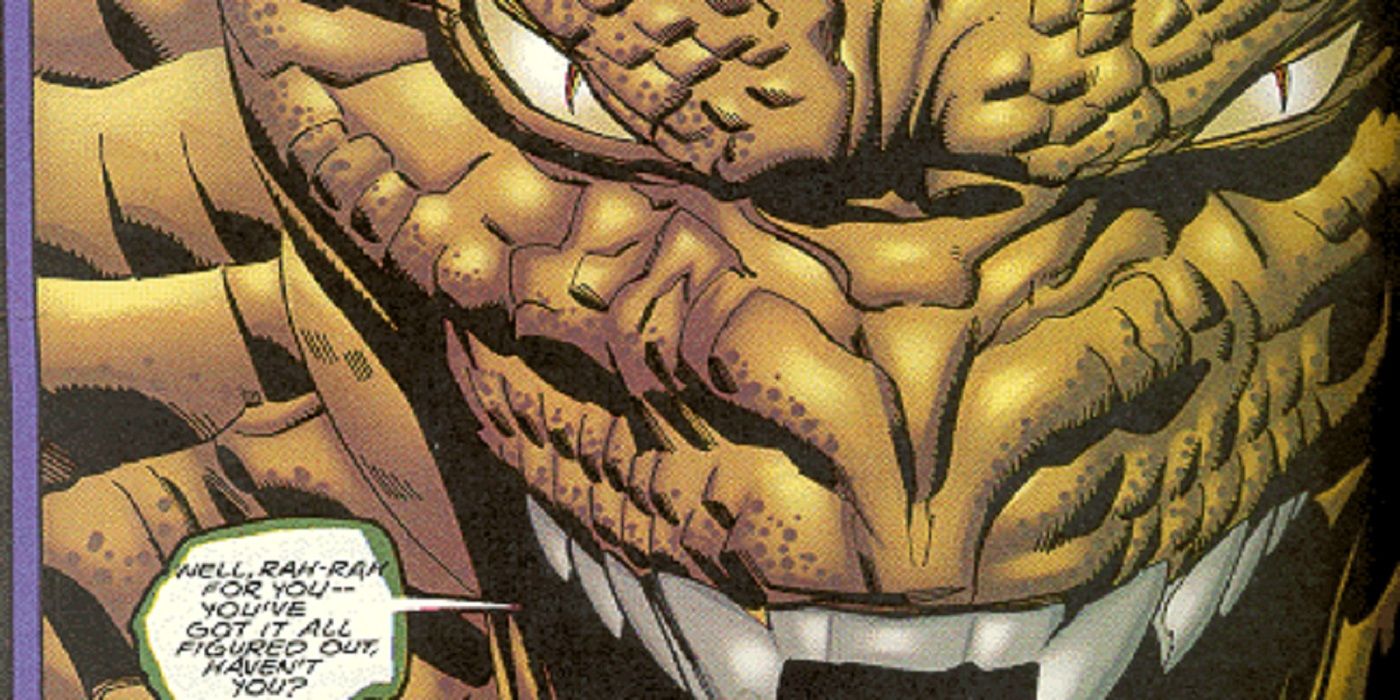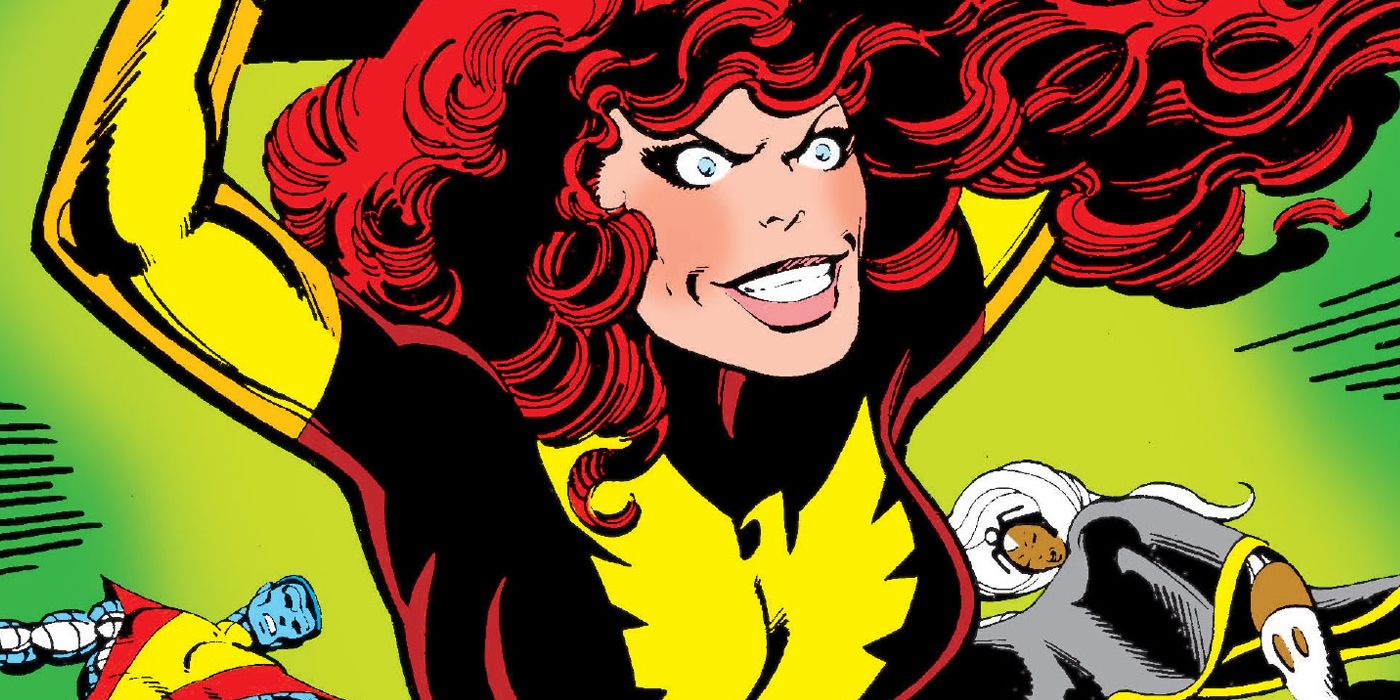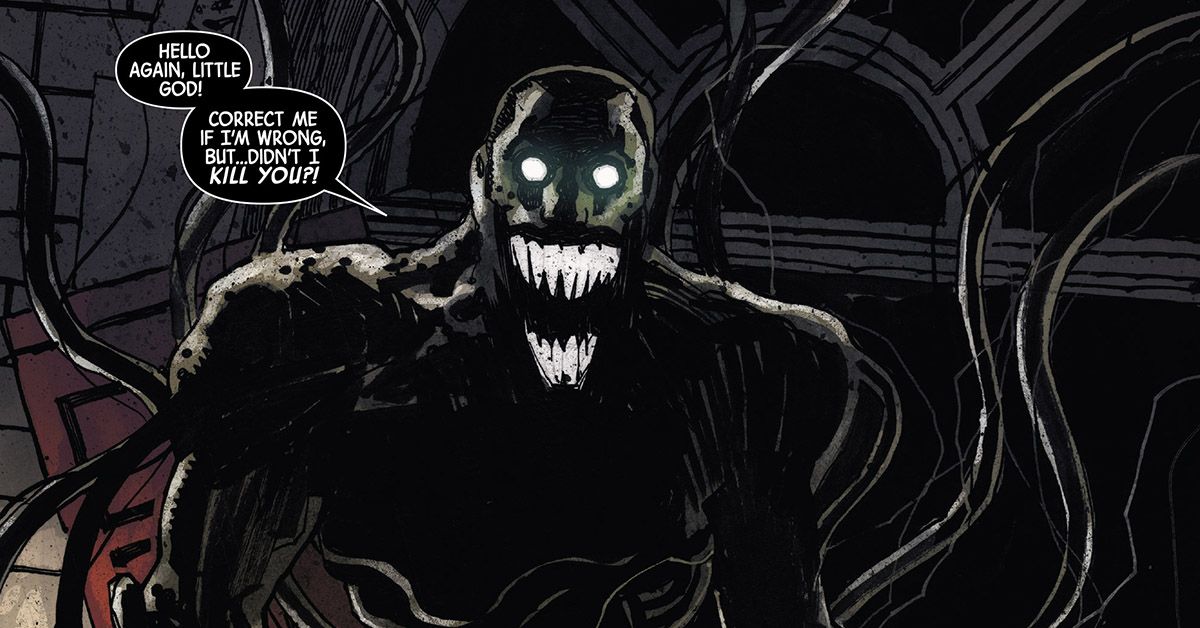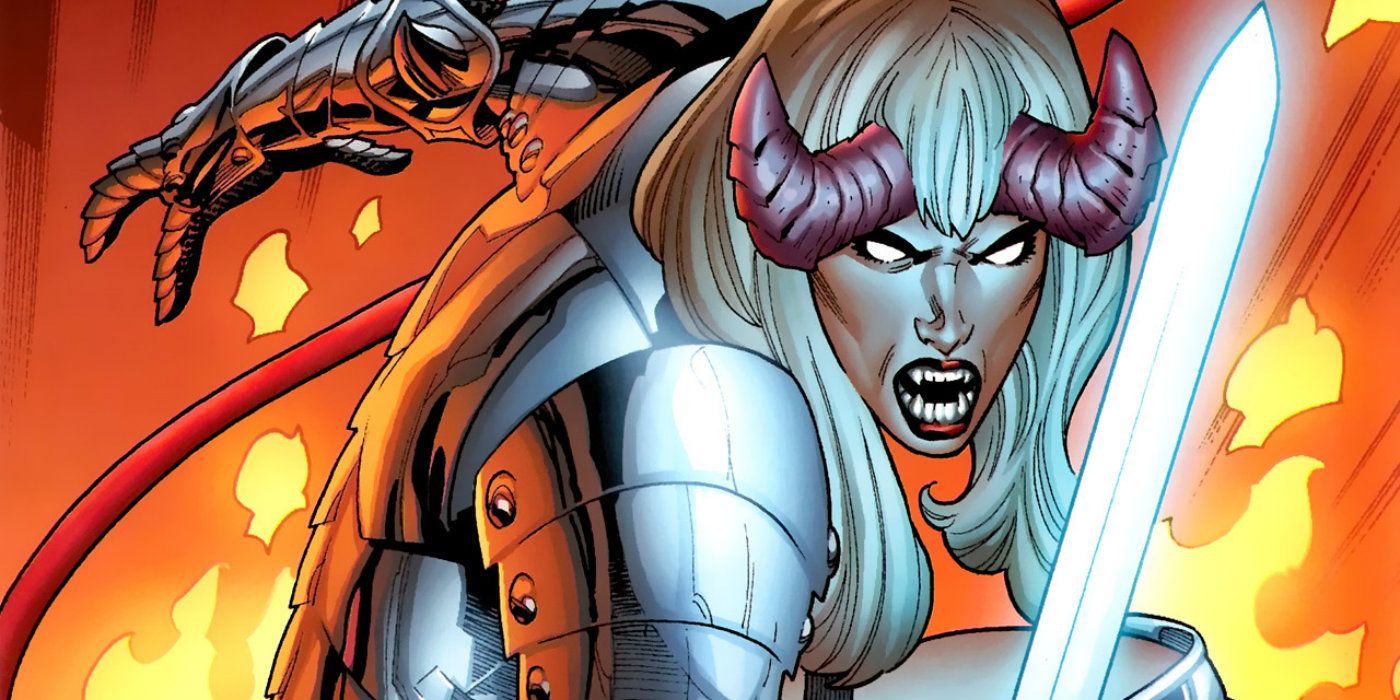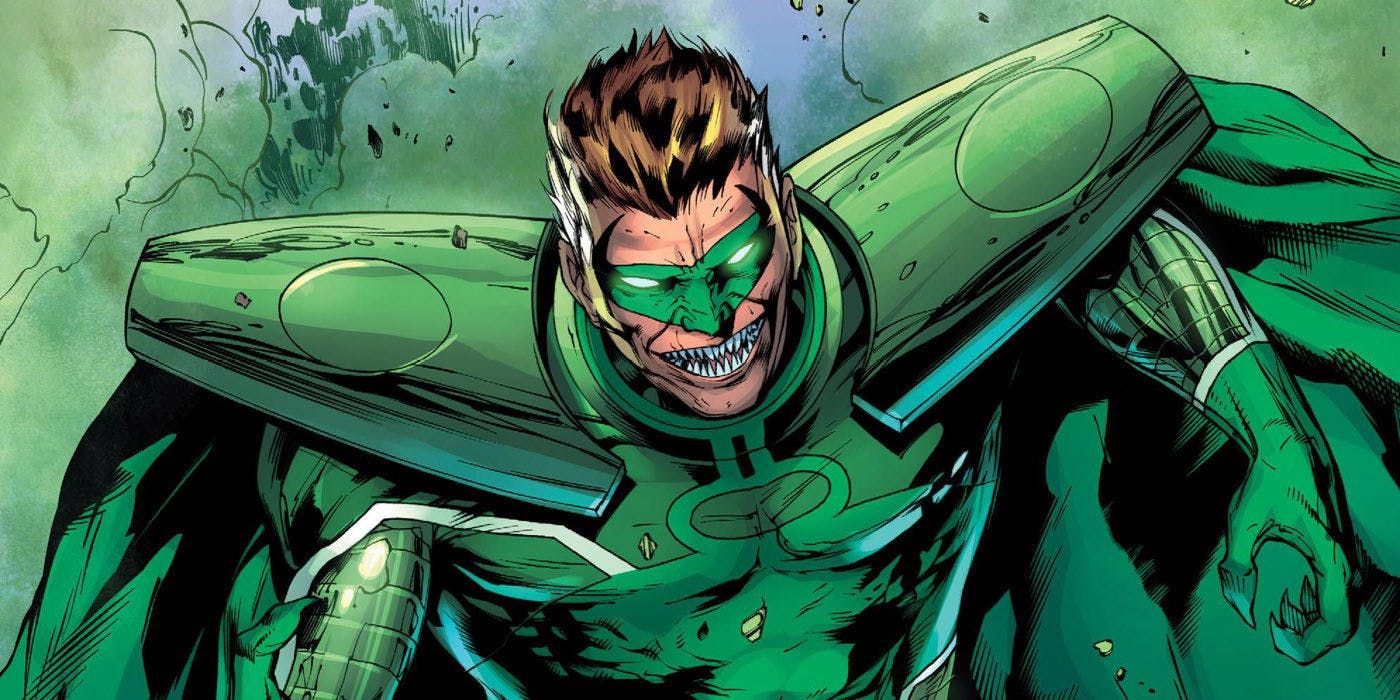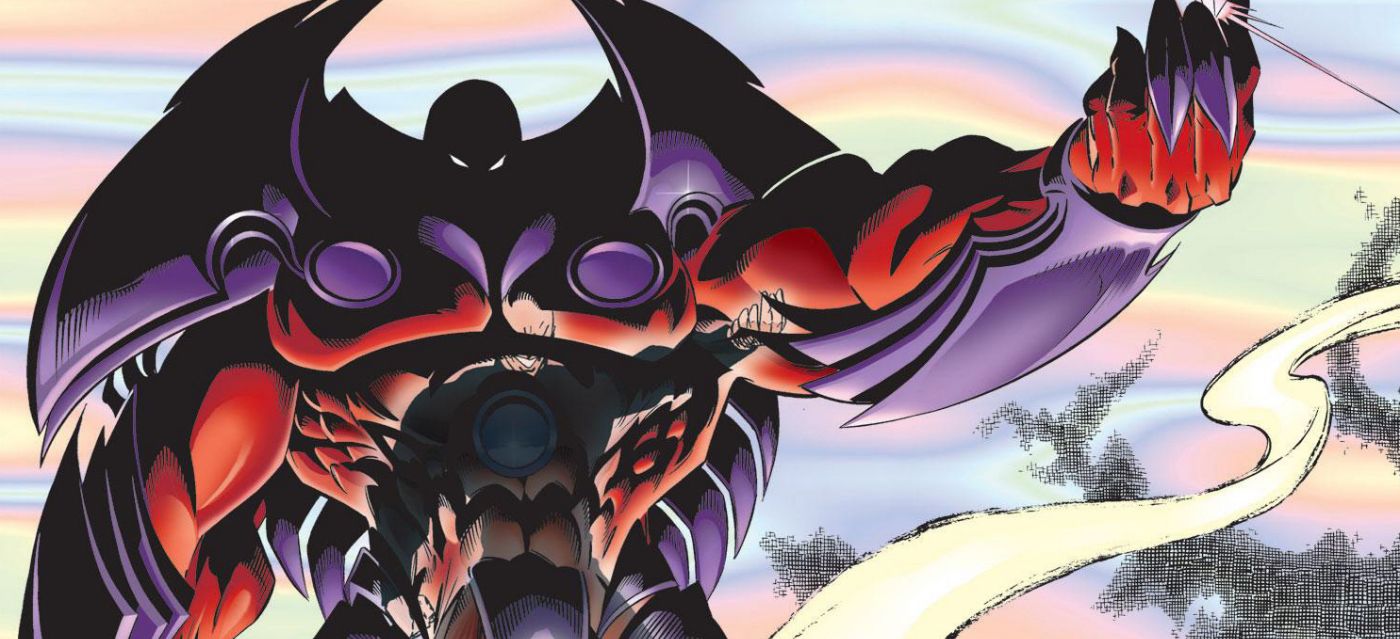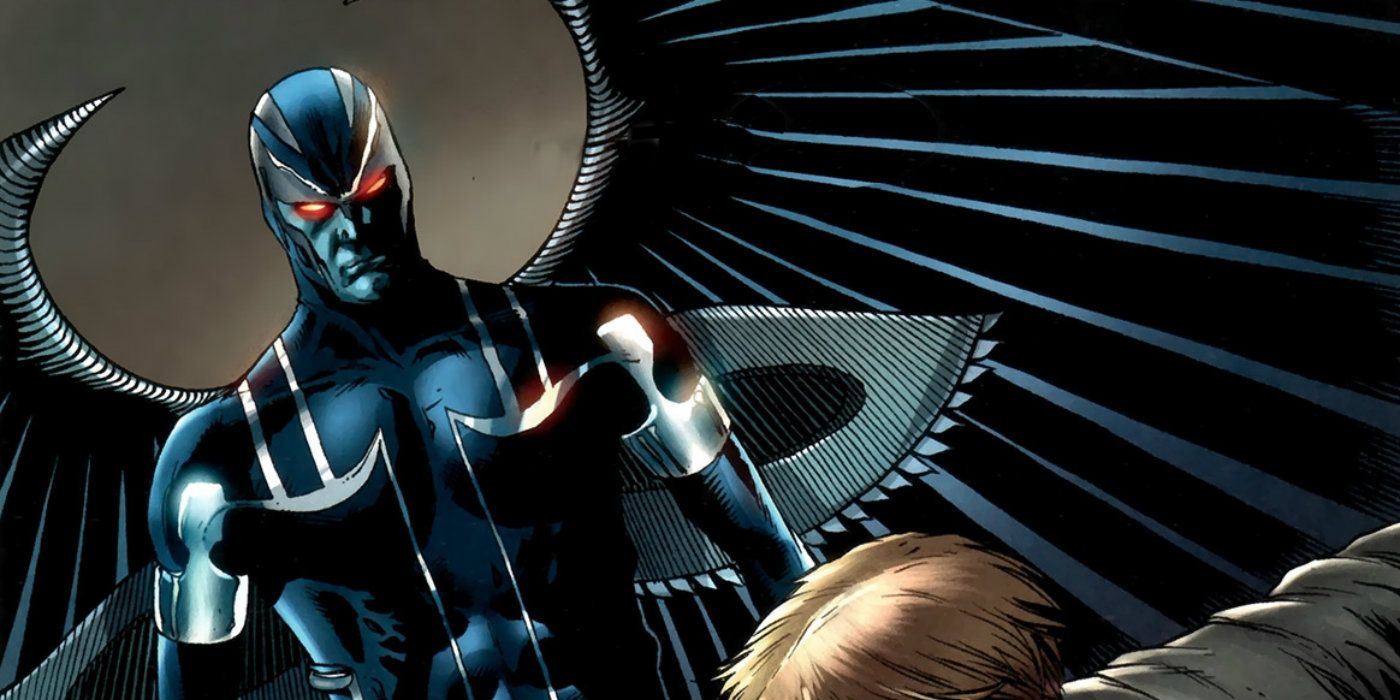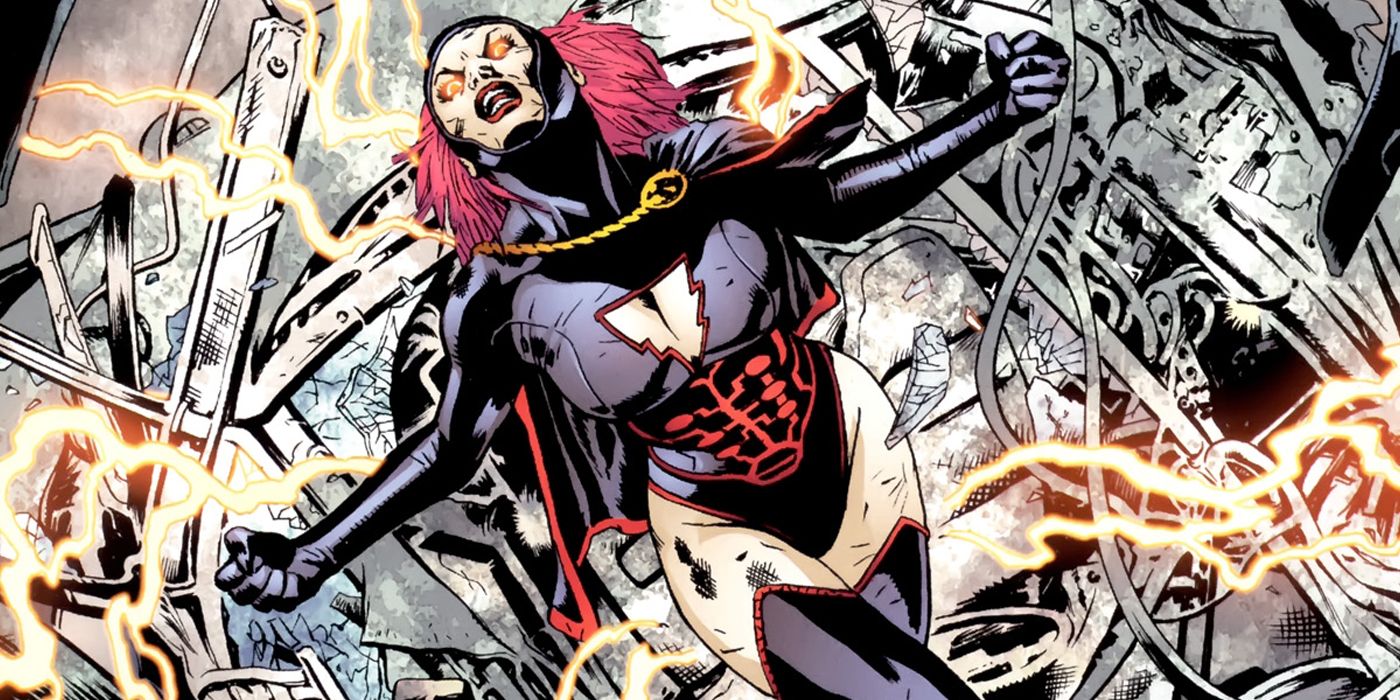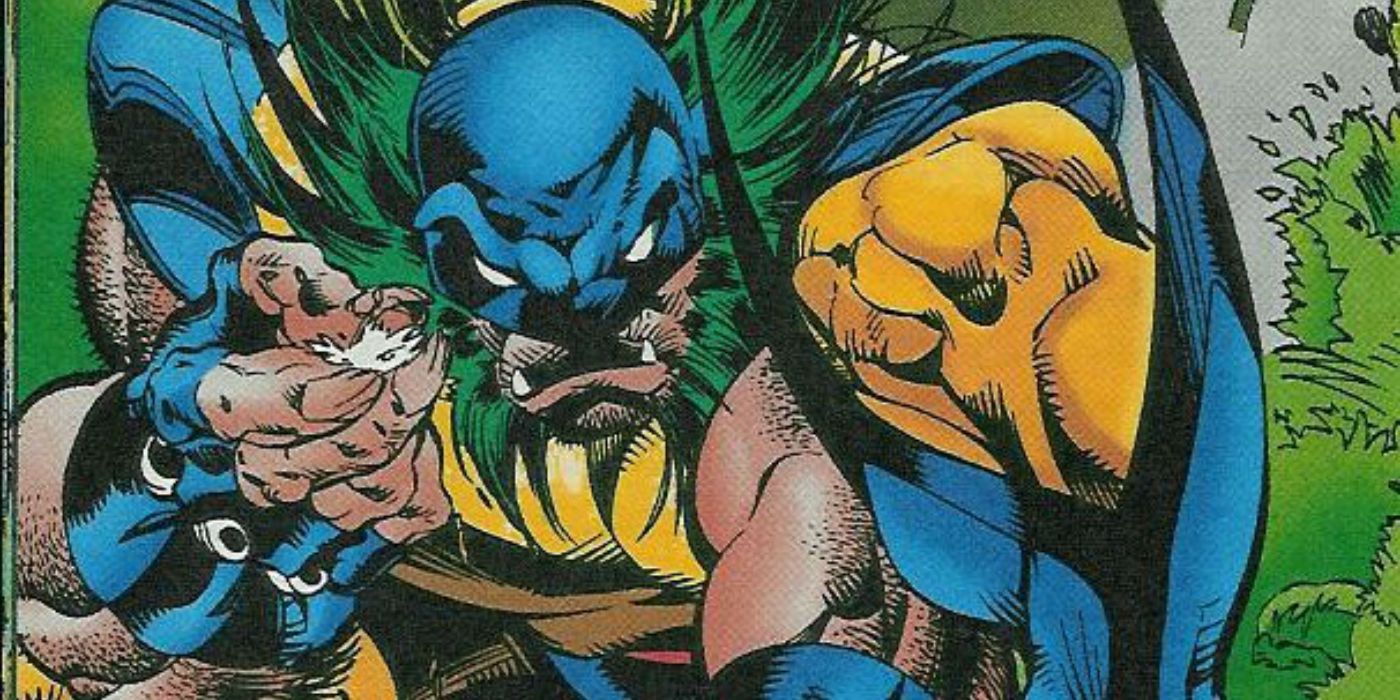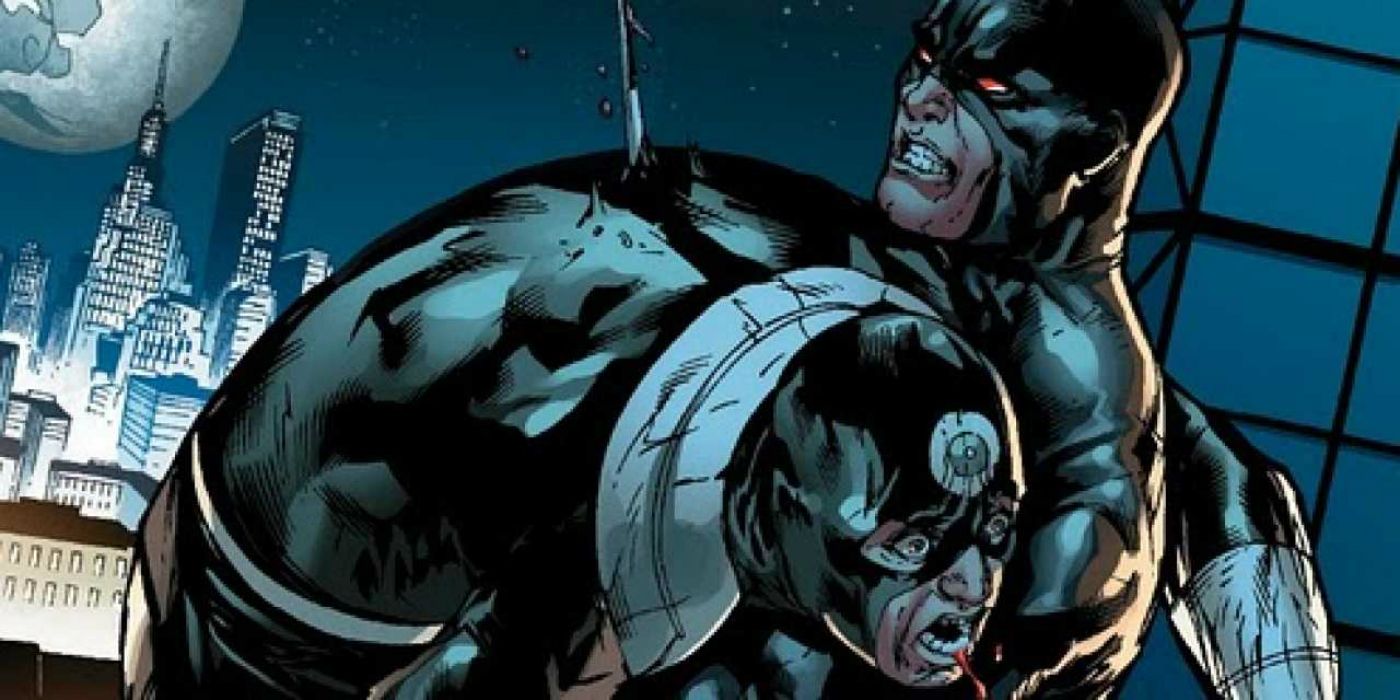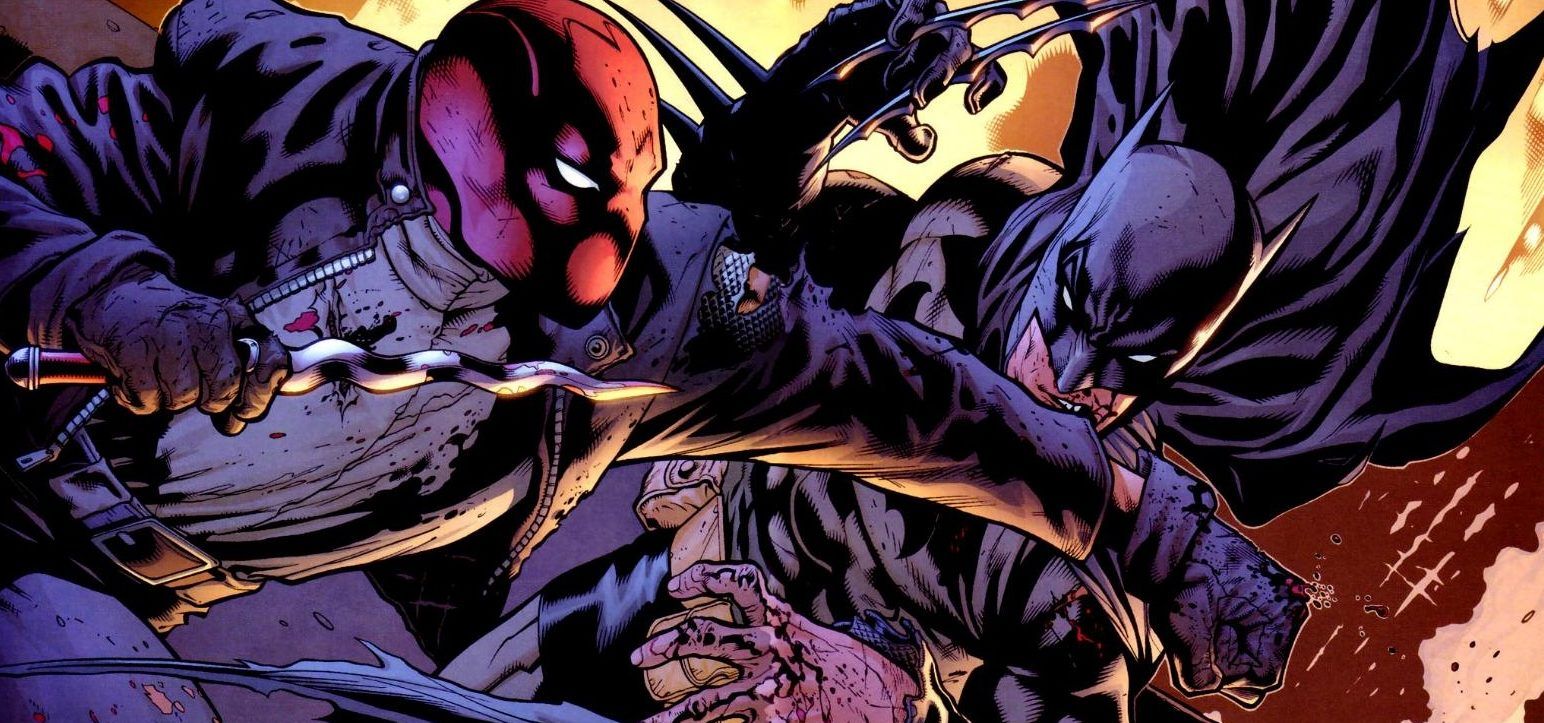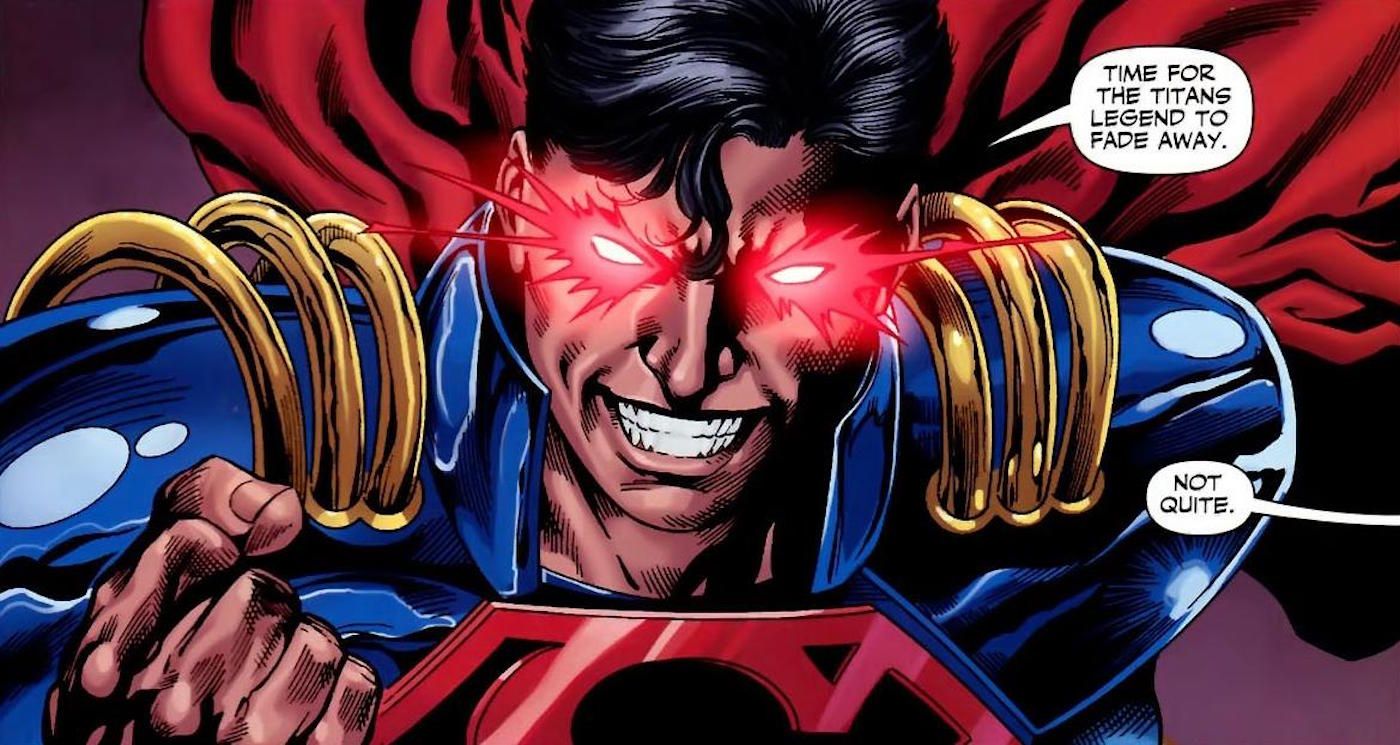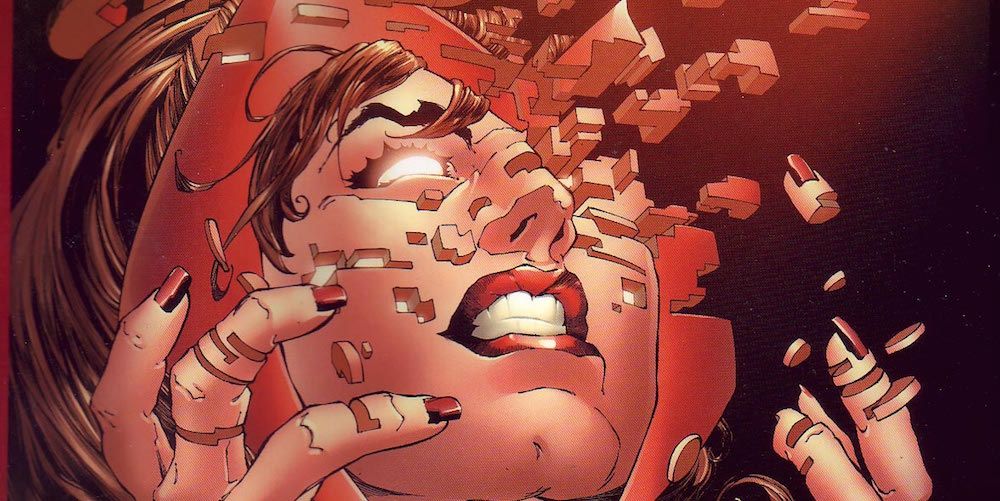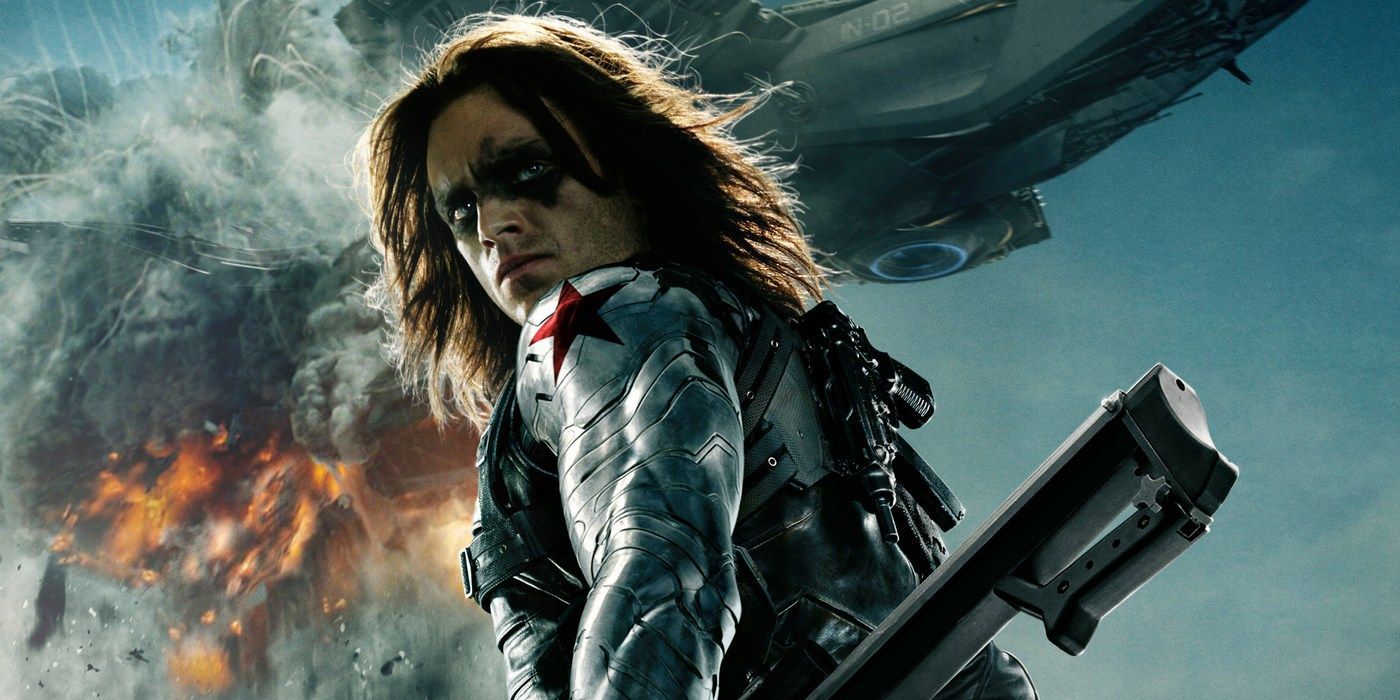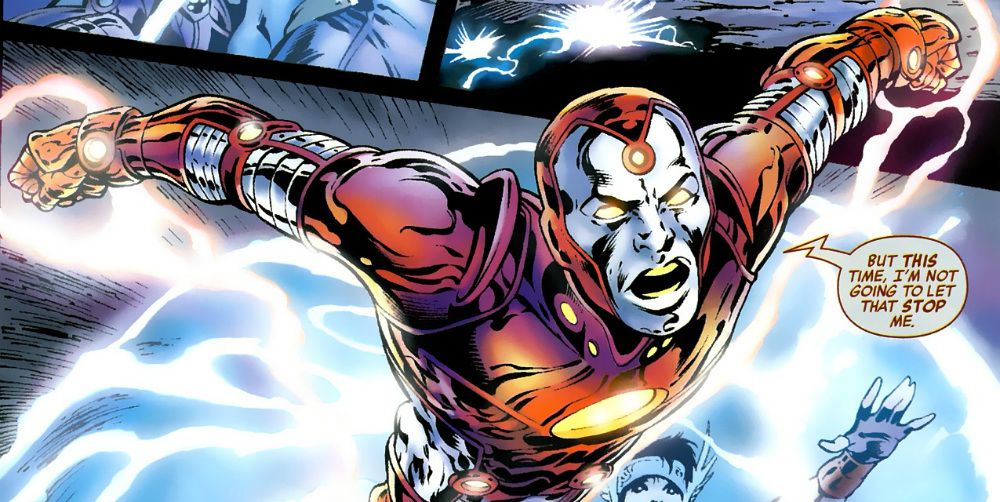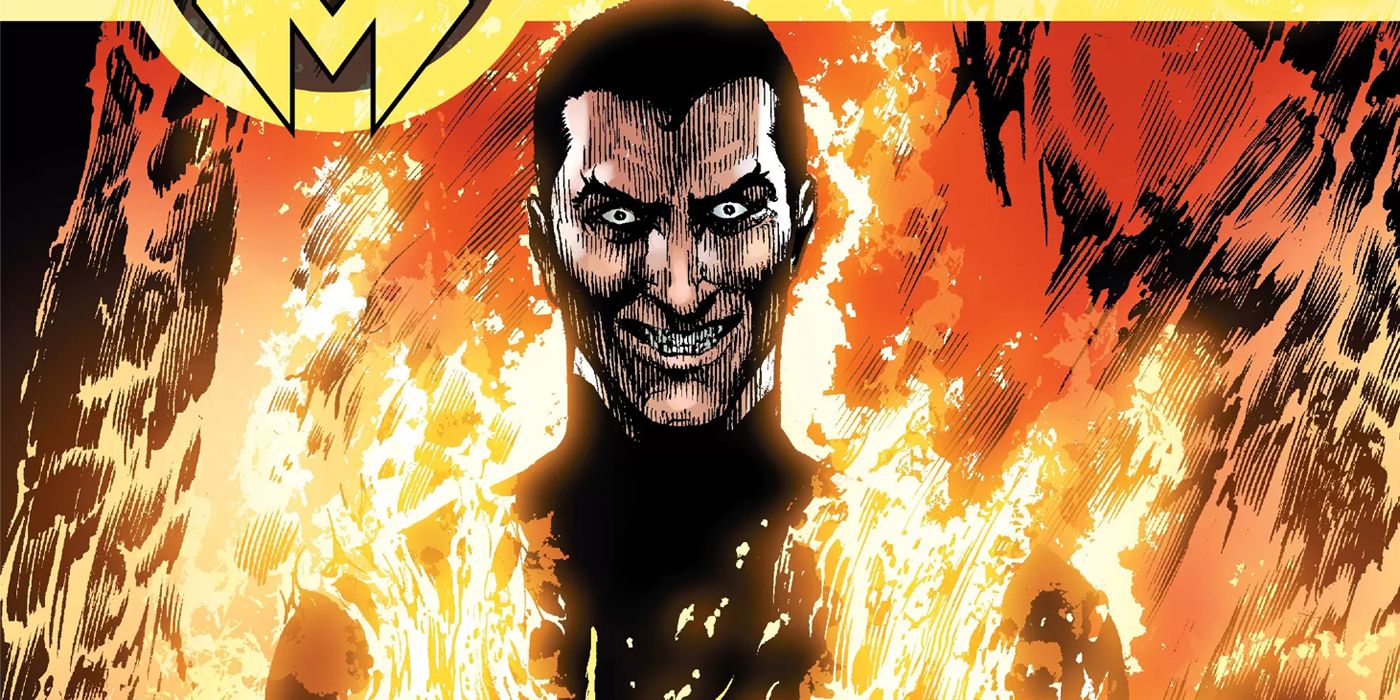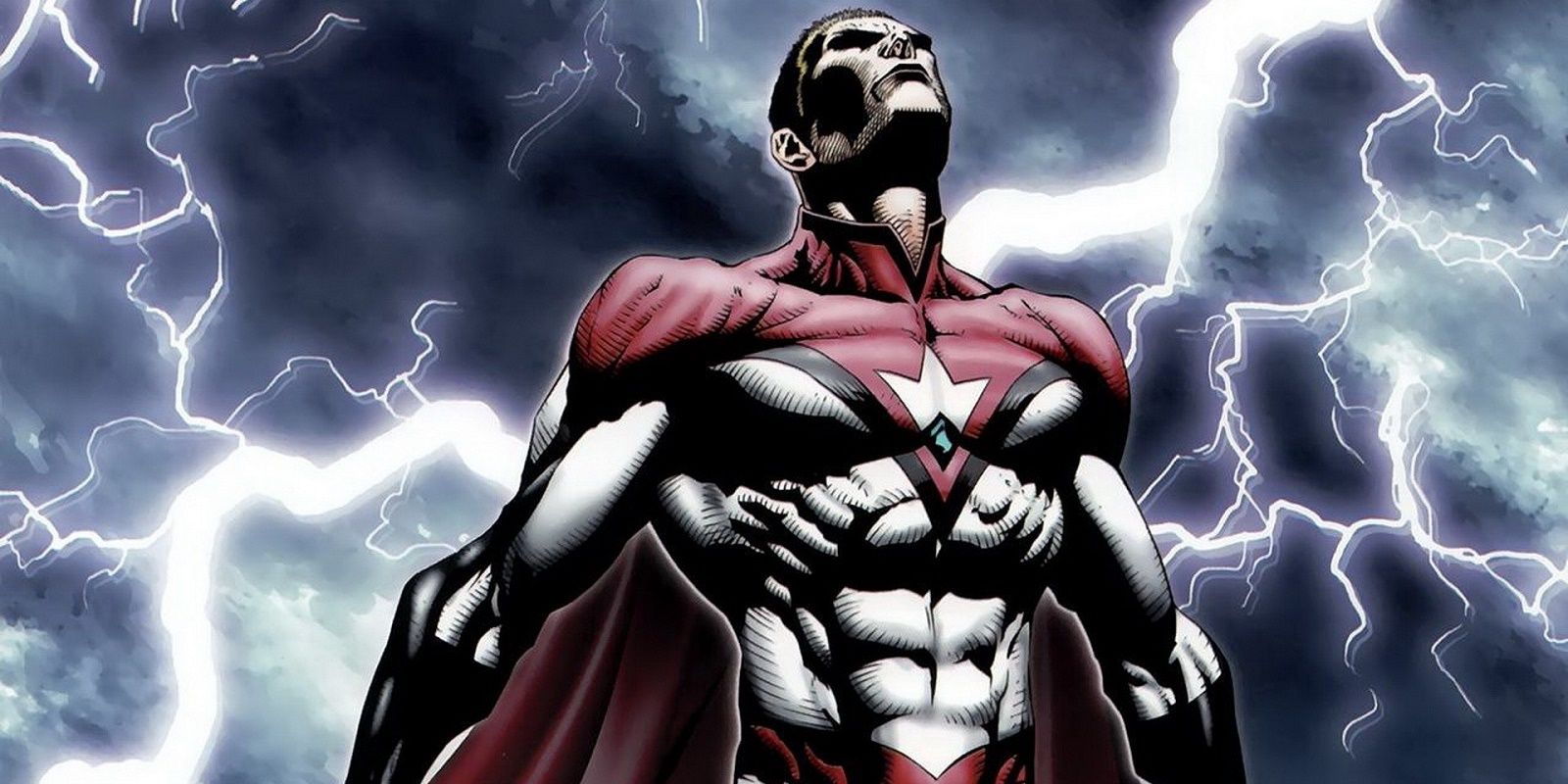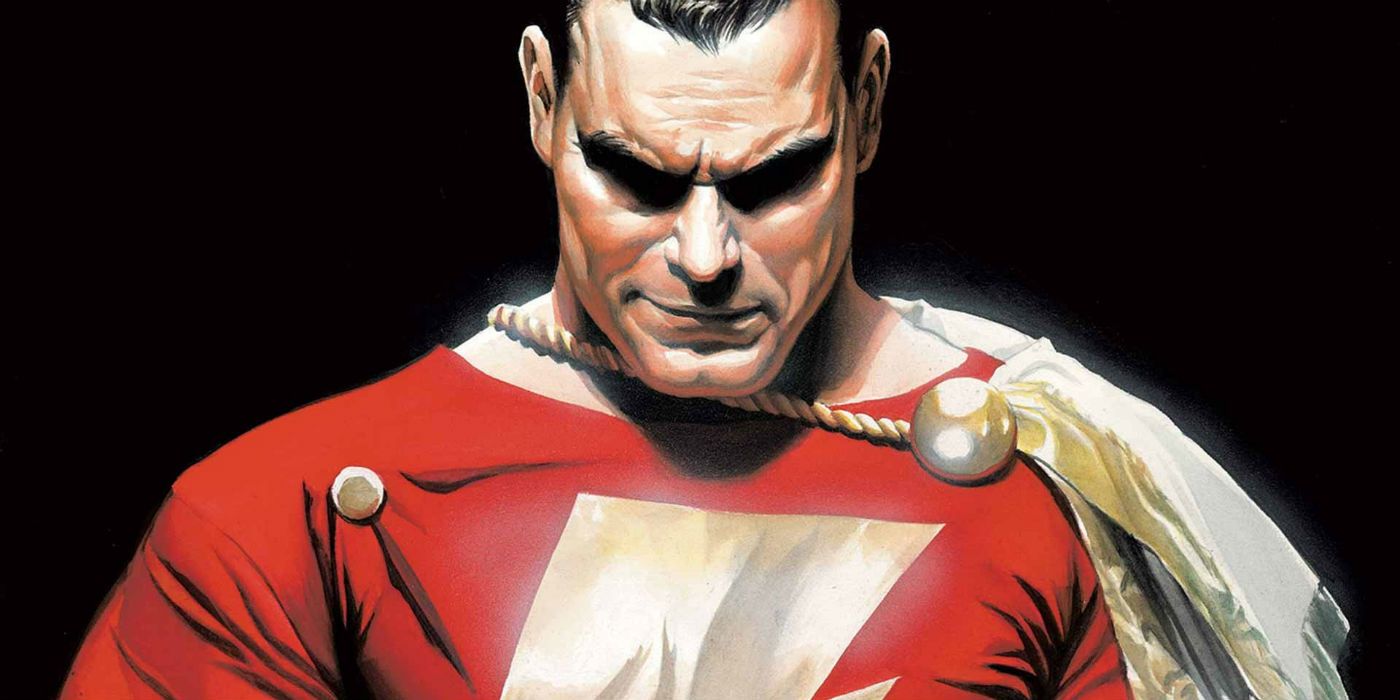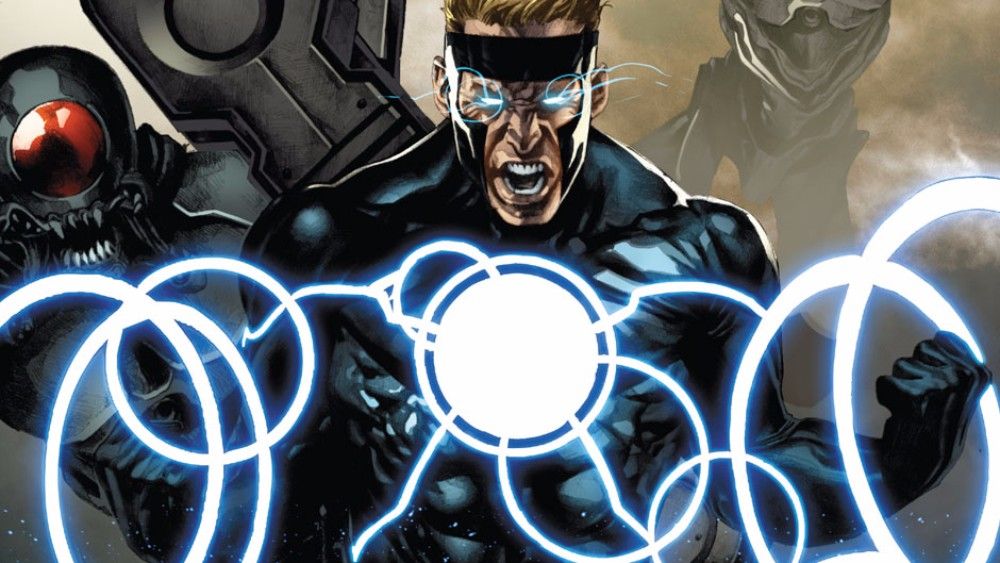All you have to do is listen to Darth Vader to know that you can only reach your full potential when you embrace the dark side. Sure, he’s not the world’s greatest role model, but if these heroes are anything to go by, the Dark Lord of the Sith potentially has a point. It’s a fairly common trope in superhero fiction that at some point your favorite good guys and girls will lean into the grim and gritty in order to get the job done. Take the late ‘80s early ‘90s; back then, embracing the darkness was all the rage. Whether it was a black-suited Spider-Man or the death of Superman, comics were far grimmer as they struggled to prove that they weren’t “just for kids anymore.”
Occasionally though, life will take a turn for the worse for those with only the best intentions. Bad things happen to good people, and in the case of some superheroes, when the darkness comes calling, it’s welcomed in with a warm hug. That, or it’s so powerful that it overwhelms the helpless hero and forces them to become a version of themselves that is hardly recognizable. The real question is whether this darkness is a new development for them, or has it been within them all along?
20 CAPTAIN AMERICA
Possibly the most controversial entry on this list and one of the most talked about superhero transformations in many years, the arrival of Hydra-Cap in 2016 was met with confusion, anger, and disappointment. Captain America, the 75-year-old Sentinel of Liberty was transformed by Cosmic Cube shenanigans into the freedom-hating nazi sympathizer that would go on to lead Hydra into overthrowing the United States government and ruling over 2017’s Secret Empire.
It’s not just that Steve Rogers was now hailing Hydra whenever he could, it was that, thanks to the depth of the manipulation to the timeline, it was revealed through flashbacks that he had always been a Hydra sleeper agent, from before he fought in World War II even. Many fans saw this as a major slap in the face to not only the fans but to the legacy of the character and of his two Jewish creators. When Secret Empire kicked off, it got worse. Marvel’s summer event blockbuster showed a Cap that was efficient, ruthless, and straight up more powerful than his more well-known counterpart... that is, until the OG came back. Hydra-Cap could even lift Mjolnir (through shady means, of course)! All of this turned out to be a manipulation of the truth, but at the time it was like rubbing fascist salt into an already angry wound.
19 HULK
You might think that the Incredible Hulk is already the dark side of someone’s personality. He is, after all, the monstrous Mr. Hyde to Bruce Banner’s Dr. Jekyll. What happens, however, when the Hulk gives in to his own dark side? Well, then you get Devil Hulk. Created in 2000 by Paul Jenkins, Ron Garney, and Sal Buscema, Devil Hulk is the lizard-like, demonic alter-ego of Bruce Banner, the personification of all of his self-hatred and resentment against the world.
This isn’t the first time that Banner’s personality has manifested itself into a being other than the Hulk that we know.
There’s also the Guilt Hulk, a malevolent being that embodies all of Bruce’s fears over his abusive father. Green Scar is a form of super savage Hulk, also known as Worldbreaker after his experience on Sakaar during the "Planet Hulk" storyline, and Kluh, which was a version of Hulk that was inverted during the Axis storyline so that he was super smart and strong, as well as having black skin and a mohawk for some reason. There’s also Gravage Hulk, a merged version of his Savage Hulk persona and his Grey Hulk version. He later went by the name Joe Fixit after that time he couldn’t turn back into Bruce Banner and took a job in Las Vegas as a mechanic/bodyguard. Hulk’s history is wild, folks.
18 PHOENIX
The ultimate Superhero Turned Bad, Jean Grey’s transformation from Marvel Girl to Phoenix to Dark Phoenix is the defining saga of the X-Men, a storyline that’s revisited to this day. Grey was one of the original five mutants from the start in Stan and Jack’s X-Men #1 from 1963, but it wasn’t until Chris Claremont and Dave Cockrum's #101 13 years later where she would -- following her death from an overdose of radiation and an unfortunate case of spaceship crash -- be reborn as the Phoenix.
It was almost immediately clear that these powers were too much for Jean Grey, but in true Claremontian fashion, it would take four more years of slow building to see her powers overwhelm and transform her into the Dark Phoenix, culminating in the seminal Dark Phoenix Saga that ran through issues #129 - #138 in 1980. Twisted by the Hellfire Club and overcome by the full force of the Phoenix Force, Jean Grey left Earth and proceeded to unleash her full might to absorb a star in the D’Bari system, inadvertently condemning an entire planet of billions to death. Although it wasn’t her fault, her comics fate was sealed, and she sacrificed herself with an ancient Kree disintegrator on the Blue Area of the Moon. As a Phoenix tends to do, her death kickstarted a cycle of rebirth that lasts to this day, recently returning to lead a mutant team in X-Men Red.
17 THE SENTRY
The definition of a meta-character, Robert Reynolds was introduced in The Sentry #1 from September 2000, but his central conceit was that he’s always been in the Marvel Universe, we all just forgot. There was even an afterword by Stan Lee that embraced the fiction, with him claiming he remembered creating him back in the ‘60s. However, it was all made up, an interesting facet of the character created by Paul Jenkins, Jae Lee and Rick Veitch.
The reason that Sentry was forgotten all those years ago? It was all because of his powerful dark side, The Void.
As The Sentry, Robert Reynolds had been a golden force for good, accomplishing such feats as helping Peter Parker win a Pulitzer Prize, helping the X-Men’s Angel get over his fear of falling, and winning the Hulk over with the public, who came to adore the jade giant instead of fearing him. When Rob regained his memories of Sentry, his old nemesis The Void also returned, prompting Reed Richards to discover that Sentry and Void are two halves of Robert’s personality. The first time around, Void threatened the whole world, forcing Mr. Fantastic, Sentry and Dr. Strange to work together to wipe the memory of him from existence.
16 MAGIK
Illyana Nikolievna Rasputina is the younger sister of Piotr Rasputin aka Colossus, but even though she appeared at the same time as her older brother (in 1975’s Giant Size X-Men #1) it would be another seven years before she would become a character in her own right (it was only six years after her first appearance that she gained a name!). This came about thanks to Uncanny X-Men #160, where she was abducted to the Limbo dimension, and when she’d returned she’s aged seven years and become a powerful sorceress.
She soon became a regular member of the New Mutants, where her powers are more greatly explored. She wields the Soul Sword, with which she can create teleportation disks, among other things. Her life is cut tragically short due to contracting the mutant-killing Legacy Virus, but this is the X-Men, so death is nothing but a revolving door. Belasco, the demon that abducted her in the first place, recreates Illyana from a part of her essence left in Limbo. This new being went by the name Darkchilde and was a twisted, demonic version of Magik. Darkchilde attempts to steal the souls of various X-Men in order to build bloodstones to give her god-like powers. Despite being constantly thwarted, she eventually becomes the ruler of Limbo
15 GREEN LANTERN
If Jean Grey’s turn to Dark Phoenix is Marvel’s biggest example of a tragic fall from grace, then surely Green Lantern’s devolution to Parallax is DC’s. Hal Jordan picked up the mantle of Green Lantern, fearless protector of Sector 2814, at the dawn of the Silver Age of comics in 1959. The Golden Age version, Alan Scott, was vastly different to the sci-fi space cop that we’re used to today, so in a lot of ways Hal Jordan was the first version of the Green Lantern character that we know and love. Over the years, many more characters would be introduced -- both as Green Lanterns of Earth and in the Corps in general, but none had taken a dark turn quite like what was in store for Hal.
When he’s disciplined for trying to "raise the dead," so to speak, his anger... turns to madness!
Following the Death of Superman and the “Reign of the Supermen” storyline, the villainous tyrant Mogul arrived on Earth and destroyed Hal’s home Coast City, obliterating all seven million of its inhabitants. As you’d expect, Hal didn’t take too kindly to this, and in his rage stricken grief defeats Mongul before recreating Coast City and all of its residents (including his parents and girlfriend) using the Green Lantern ring. Aside from being super creepy, it’s against the rules, and when he’s disciplined, his anger turns to madness. Adopting the name Parallax, absorbs the full power of the Green Lantern power battery and goes on a rampage against the Corps. This was later explained as an alien parasite, the personification of fear known as Parallax, but at the time it was a disturbing look into Hal's deepest, darker psyche.
14 PROFESSOR X
For decades of X-Men comics, Professor Charles Xavier was the teacher, mentor, father-figure, and friend for the hundreds of mutants that walked through the doors of his school for gifted youngsters. He was the foundation stone of trust and respect, without which the X-Men -- and indeed the world’s mutant population -- would crumble. There are whole storylines devoted to just how crappy the world would be without him in it (Age of Apocalypse being the biggest one). So it was a bold move for Marvel to then turn around and explore just what would happen if his previously unseen dark side emerged and went on a universe-altering rampage.
That’s exactly what happened when it was revealed that Onslaught -- perhaps the biggest Big Bad that the X-Men had ever faced up to that point -- was actually a personification of the combined dark elements of both Professor X and Magneto’s psyches. It turns out that Xavier had been suppressing a lot of negative thoughts for the last 30 years, and this giant ball of dark energy, left to fester in the recesses of his mind, latched onto Magneto’s blatant hatred for his longtime enemy, and manifested into the form of Onslaught. The major X-Men event of the late ‘90s, the "Onslaught Saga" spilled out into the wider Marvel universe, dragging nearly every series into its wake and leading to the "Heroes Reborn" initiative that saw Image Comics founders return to the company to redefine some of its biggest books, before a full relaunch a year later.
13 ANGEL
Warren Worthington was one of the five founding X-Men of the Xavier School for Gifted Youngsters. Aside from having an iconic look, his association with religious iconography both in the real world and within the Marvel Universe made him a strong choice of character to turn bad. And yet, that’s exactly what happened to him, and it all started in the “Mutant Massacre” storyline, which saw an attack from the Marauders leave Angel with crippled wings. When the wings turn gangrenous, the villainous Cameron Hodge goes against Warren’s wishes and has them amputated, leaving Angel a shell of his former self.
Angel is whisked away by Apocalypse to serve as his lead Horseman... Death!
Desperately escaping the hospital, Angel’s plane is sabotaged by Hodge, and he apparently dies in the explosion. In reality, though, he’s whisked away by the demonic Apocalypse, who offers Angel the option to restore his wings, if he will serve as one of Apocalypse’s Four Horsemen. From then on, Angel’s life is changed forever. Becoming Archangel, Warren’s body is transformed. No longer the bearer of feathered wings, Archangel has sharp, imposing organic metal blades that can be fired as projectiles and cut through anything. Now the Horseman of Death, Archangel’s skin is blue, his nature is sadistic, and he’s turned against his former friends and colleagues. The archangel persona reemerged during Uncanny X-Force, stronger than ever, threatening the very existence of the world! Even today it exists as a deeply-hidden persona that could still escape if Warren does not keep his emotions in check.
12 MARY MARVEL
Mary Marvel is a part of the Captain Marvel family of characters first created by Fawcett Comics in the late ‘30s early ‘40s. First appearing in 1942’s Captain Marvel Adventures #18, Mary Marvel was the alter ego of Mary Batson, the twin sister of Billy Batson, the young boy who, when exclaiming the magic word -- Shazam! -- would transform into the titular Captain Marvel. Mary was the original female spin-off of a male superhero, predating Supergirl by over a decade. Created by Otto Binder and Mark Swayze, Mary Marvel was as wholesome as the whole Captain Marvel family. When Fawcett got bought out by DC, things took a decidedly darker turn.
Forced to change the name of the main character to Shazam thanks to a copyright battle with Marvel, DC had trouble marketing Captain Marvel and his family for years, and in fact, Mary Marvel was written out of the books for several years, not appearing again until 1994. Originally known as the “lady Captain Marvel,” Mary had a costume change and a new name -- Mary Marvel -- at the turn of the millennium. In the mid-2000s, during the Countdown series, Mary loses her powers, slips into a coma and acquired Black Adam’s powers, only to relinquish them and then fall under the influence of Darkseid and his henchman Desaad. As the DC universe geared up for another reboot in Flashpoint, Mary Marvel had become a darker, twisted version of her former self, with a black costume and a heart to match.
11 WOLVERINE
You may have thought there was always something a little feral about Wolverine; after all, he’s so short and hairy and resembles an animal (just not the one he’s actually named after). This comparison took a decidedly more literal turn in 1993 following the “Fatal Attractions” storyline, where quite possibly the worst thing to ever happen to Wolverine turned him into a noseless feral beast. Considering this is a guy that had molten, indestructible metal poured over all of the bones in his body, you just have to wonder: what could be worse than that? Well, how about having Magneto rip it back out again, through every pore in your body?
“Fatal Attractions” did the very thing that fans had been arguing about for years, and pitted the dude with metal throughout his body against the actual Master of Magnetism.
As you can imagine, it didn't go well for one of them. This had a two-fold effect: first, it was revealed that Wolverine’s claws were bone underneath all along, making them a part of his mutation. More than that, the adamantium that was in his system was actually holding back a secondary mutation. This mutation was turning him into a feral monster, one that killed Sabretooth and Genesis in cold blood, grew giant claws, and lost his nose as he devolved. He lived like this for a while but eventually had his adamantium restored by Apocalypse when he tried to make him his servant
10 DAREDEVIL
Matt Murdock became the vigilante known as Daredevil after an accident as a boy blinded him but enhanced all of his other senses to superhuman levels. Created by Stan Lee and Bill Everett in 1964, Daredevil started life as a smiling, playful hero that faced all manner of crazy and colorful villains while he somersaulted over the rooftops. He even had a bright yellow and red costume for the first six issues, before adopting the red suit we recognize today. While he went through a sci-fi phase in the ‘70s (like a lot of superhero books), it wasn’t until Frank Miller took over that Daredevil’s life took a darker turn.
Eschewing the tone and continuity that came before, Miller reimagined Daredevil as a mob-fighting ninja determined to clean up the streets of Hell’s Kitchen. It was really a precursor to Miller’s work on Batman in the years to come, but it’s an angle that’s mostly stuck with creators ever since. This dark slide perhaps reached its pinnacle in 2010 in the mini-event Shadowland. The story saw Matt become the leader of the Hand ninja clan, build a fortress/prison in the center of Hell’s Kitchen, and kill his longtime nemesis Bullseye. It transpires, however, that this is not some sort of PTSD brought on by the years of tragedy piled onto the character, but rather a demonic possession, one which he is cured of and goes back to being the Daredevil we all know and love.
9 ROBIN
Created by Gerry Conway and Don Newton back in 1983, Jason Todd soon picked up the mantle as the second Robin after the original, Dick Grayson, left the costume behind and became Nightwing. While fans loved the original (Robin’s original introduction in 1940 doubled the sales of the Batman books), they didn’t take a shine to this new Boy Wonder, one who was first introduced stealing the tires off the Batmobile (in post-Crisis continuity at least). He started off as practically a clone of Dick Grayson until Crisis on Infinite Earths revamped his origin into that of a street urchin, taken under Bruce’s wing after he decides that, without his help, Todd would channel his rage into a life of crime.
By a slim margin his fate was sealed...
Batman editor Denny O’Neill soon figured out that fans weren’t taking to Jason Todd, but it was unclear whether it was down to the new Robin’s attitude or the fact that he had usurped a fan favorite like Dick Grayson. Either way, the now infamous decision was made to give the fans a phone-in poll to decide if the new Robin lived, or died. By a slim margin his fate was sealed, and in the 1988 storyline, “Death in the Family,” Jason Todd was bludgeoned to death by a crowbar thanks to the Joker. His inevitable return (because comics) was in the pages of “Under the Hood” in 2005, where Todd returned as a villain called Red Hood to torment Batman’s guilt-ridden psyche. He's since leaned more into the anti-hero role, though, even leading his own team called The Outlaws.
8 SUPERBOY
With a punch that can shatter the walls of reality itself, Superboy Prime has taken on an almost infamous reputation as a character turned to evil (as well as a manifestation of the gatekeeping fanboy), but his origins are far more altruistic. Created in 1985 by Elliot S. Maggin and Curt Swan, Clark Kent was a simple boy who hailed from Earth Prime, aka our Earth -- one without superheroes and except in comic books. Found abandoned as a baby by Jerry and Naomi Kent, he is actually their universe's Kal-El, sent to Earth to avoid the death of Krypton. He soon meets the Superman of Earth-One, who helps him discover his inner powers.
Young Superboy -- already the victim of a slightly convoluted backstory -- gets dragged into the events of Crisis on Infinite Earths, sacrificing his life to stop the Anti-Monitor, traveling to a “paradise dimension” along with Alexander Luthor of Earth-Three and the original Superman and Lois Lane from Earth-Two. Here, they all watch helplessly as the DC Universe turns darker and darker over the decades until Superboy -- bitter and twisted by what he sees -- pounds on the walls of reality, causing ripples through continuity that writers used to explain all the changes they wanted to make. Superboy Prime’s escape and turn to villainy is chronicled in the 2006 series Infinite Crisis and continued in storylines like the “Sinestro Corps War” and Countdown. He’s currently imprisoned within the Source Wall, and hasn't been seen for some time.
7 SCARLET WITCH
Wanda Maximoff, along with her brother Pietro, has always straddled two worlds. On the one hand, they are the twin children of Magento, which makes them X-Men characters. On the other hand, Avengers writer Stan Lee made them members of Earth’s Mightiest Heroes just one year after their X-Men debut, placing them firmly in that lineup too. Despite their obvious mutant heritage, they found their biggest character development within the Avengers, where they remained for many years. The Scarlet Witch even married notable Avenger Vision in 1975, and they have two children, Thomas and William.
After they left the east coast and Wanda became the leader of the West Coast Avengers, it’s revealed that their children are not real, but merely fragments of the soul of the Demon Mephisto.
Devastated by this loss, Wanda’s memory is altered so that she doesn’t remember having children. Sometime after regaining those memories, she merges with a demon in an attempt to bring them back to life. This demonic possession leads her (somewhat predictably) down a dark path, where she terrorizes the Avengers, killing Hawkeye and Scott Lang, and leading to not only the destruction of the Vision but of the Avengers themselves. Later, her brother convinced her to alter reality in order to try and save her life, bringing about the House of M event and the fatal words “No More Mutants,” which decimates the mutant population.
6 BUCKY BARNES
James Buchanan Barnes, otherwise known as Bucky, was the kid sidekick to Captain America, starring alongside the Sentinel of Liberty in Captain America Comics #1 in 1941. Created by Joe Simon and Jack Kirby, Bucky followed in the tradition of kid sidekicks of the time and was nothing more than a plucky, spirited and fun friend for Captain America. When Cap was resurrected in 1965’s Avengers #4, it was established that both Cap and Bucky had disappeared near the end of World War II, only for Cap to be defrosted from his icy resting place in the modern day.
It wasn’t until 1968’s Avengers #56, however, that it was revealed that Bucky had seemingly died in an explosion caused while the pair tried to stop an experimental drone plane being launched by Baron Zemo. It was this same explosion that plunged Captain America into the ice, and for nearly four decades, this remained Bucky’s fate. It was always declared by fans that Bucky was one of the deaths that couldn’t be reversed. However, in 2005, writer Ed Brubaker revealed that while Cap had remained on ice until his rescue by the Avengers, Bucky was fished out by the Russians and was brainwashed into being their ultimate sleeper assassin, the Winter Soldier. He became a villainous antagonist for Cap for a while, until they were able to rescue him from his captors and restore his memories.
5 IRON LAD
Following the death of the Avengers dream in “Avengers Disassembled,” it transpired that Vision put a contingency plan in place to resurrect the team. A new group of heroes, soon to be called the Young Avengers, joined forces, led by the mysterious Iron Lad. Along with Kate Bishop as Hawkeye, Teddy Altman as Hulking, Eli Bradley as Patriot, Billy Kaplan as Wiccan and Cassie Lang as Stature, this band of Young Avengers go against the wishes of Captain America and Iron Man and continue to do what they can to fight crime.
However, it’s soon revealed that he is, in fact, a younger version of stalwart Avengers villain, Kang!
Nathaniel “Nate” Richards went by Iron Lad, but his original destiny is far more sinister. He arrived in the present day looking for the Avengers after escaping from Kang the Conqueror, the time-traveling madman, only to find that the team had disbanded. It’s his analysis of the Vision’s almost destroyed systems that leads him to find the fail-safe that forms a Young Avengers team. However, it’s soon revealed that he is, in fact, a younger version of Kang, plucked from the time-stream by his older self so that he can be molded into a better version of Kang. The plan backfires, and Iron Lad developed a sense of justice, fighting against Kang and earning his place on the Young Avengers.
4 KID MIRACLEMAN
The Miracleman franchise has a long and complex history. Originally called Marvelman, these superheroes were created in 1953 by Mick Anglo to replace the Fawcett characters of Captain Marvel and family. Anglo worked for Len Miller who was licensing the Captain Marvel comics from Fawcett and republishing them in black and white for the UK audience. When the rights to Captain Marvel were discontinued due to a copyright dispute with DC, Anglo was charged with rebranding the characters so that they could continue being published in the UK. Thus, Captain Marvel became Marvelman, who was soon joined by Kid Marvelman in 1955.
When L. Miller & Sons closed in 1963, Miracleman was left abandoned for nearly two decades, along with all of his cast of characters. The rights to the line were picked up by Quality in 1982 and the Miracleman concept was revamped by Alan Moore and Gary Leach as a darker, grittier world. It was revealed that all of the previous adventures had been a simulation used by the British government to experiment on three superhumans. When an atomic blast frees them, Kid Miracleman abandons his human form, Johnny Bates, and remains in his invulnerable state. He soon becomes older, more bitter and twisted in this darker reality, turning to a life of sociopathic sadism, fighting against Miracleman and becoming his greatest nemesis.
3 THE PLUTONIAN
Creator Mark Waid -- long known for his legendary runs on superhero comics for both Marvel and DC -- began work on a different kind of superhero in 2009 for Boom Studios. Taking on the premise that not all people that gain superpowers are inherently good, Irredeemable followed the devastation that befalls a world when their Superman figure turns into a murdering psychopath. The Plutonian, known as the world’s greatest superhero and leader of the superhuman team The Paradigm, turns into the world’s greatest villain, the absolute power he wields corrupting him absolutely.
This leads to the catastrophic betrayal of his friends, teammates and indeed the world as he carves a path of destruction across the planet.
Irredeemable is a fascinating series that explores the cost of superheroics and the ethical price of heroism. By using analogs of familiar heroes, and leaning into (often subverting) familiar superhero tropes, Waid and artist Peter Krause (later Diego Barreto) tell the story of an all-powerful, trusted and beloved superhero decimating everything that is good about his world. We follow the rest of the members of The Paradigm, now shattered by Plutonian’s actions, coming together, despite heartbreak and internal conflict, to try and bring down a superhero turned villain that is not only stronger than them but knows them all intimately.
2 SHAZAM
Created by C.C. Beck and Bill Parker in 1939, Captain Marvel was originally designed by Fawcett Comics to cash in on the superhero craze that kicked off thanks to the rise of Superman over at DC. Captain Marvel was the alter ego of Billy Batson, a young orphan boy who gained superpowers after being led to the underground throne room of the mysterious wizard Shazam. There, Billy is granted the wisdom of Solomon, the strength of Hercules, the stamina of Atlas, the power of Zeus, the courage of Achilles and the speed of Mercury, and with a mighty cry of the magic word -- “Shazam!” -- transforms into the superhero Captain Marvel.
Following a copyright claim by DC, Fawcett ended publication of the Captain Marvel family in 1953, and nearly two decades later, the rights were picked up by none other than DC. Now called Shazam thanks to a separate copyright claim by Marvel, the character has undergone many changes in his years under DC. The most extreme is perhaps in the limited series Kingdom Come, where Billy Batson is brainwashed by Lex Luthor into transforming into his alter ego and unleashing a force that will destroy the world. Initially an enemy of Superman, the latter manages to convince the former to do the right thing, and Captain Marvel sacrifices his life to save the planet.
1 HAVOK
Being a Summers brother means your life is never going to be easy, and more often than not it will be filled with tragedy. Such is the case with Scott Summers, whose life as Cyclops, the leader of the X-Men, has led him to lose the love of his life multiple times, kill his mentor and ultimately die due to his turn to almost-villainy. Such is the case with his younger brother Alex Summers, too. As Havok, Alex was often depicted with a chip on his shoulder, resenting the relative power and success of his brother Cyclops. With his energy blasting powers, Havok has often been vital in X-Men missions, even though he and his longtime partner Polaris were reluctant to join the X-Men proper.
After joining the Avengers and the X-Men to fight against his Phoenix-powered brother, Havok was tasked by Captain America to lead a team of Avengers that united both mutants and Avengers. Called the Unity Squad, Alex and his teammates fought against such threats as the Red Skull (who had stolen Charles Xavier’s brain) and the Apocalypse twins. In the 2014 event Axis, he was inverted by the Red Skull (now known as the Red Onslaught) and became a darker, more villainous version of himself. He avoided the reversion that happens at the end of that series, remaining darker for the next four years of comics storylines, only very recently being restored to his former self by Emma Frost.

